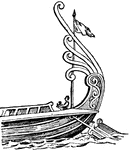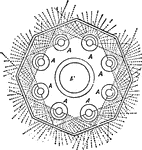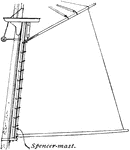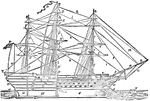Clipart tagged: ‘mast’
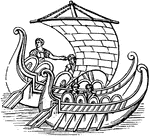
Antenna
"The yard of a ship. The ships of the ancients had a single mast in the middle, and a square sail, to…

Antenna
"The yard of a ship. The ships of the ancients had a single mast in the middle, and a square sail, to…
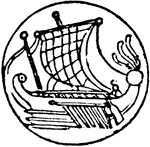
Antenna
"The yard of a ship. The ships of the ancients had a single mast in the middle, and a square sail, to…
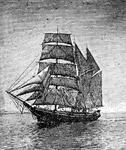
Barkantine
A three masted vessel, with the foremast square rigged, and the mainmast and mizzemast fore and aft…
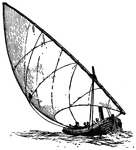
Boat with Lateen-sail
A lateen-sail is a triangular sail extended on a yard which is slung one quarter from the lower end…

Brig
"Brigantine: a square-rigged vessel with two masts and fore and aft mainsail." — Williams, 1889

Spheroidal Form of the Earth
"When one is at sea, or standing on the sea-shore, the first part of a ship seen at a distance, is its…

Floating Lights
"aa is the mast, b tackle hook, c, c brass flanges for fixing parts of lantern together, e and g weather…
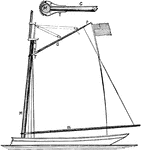
Gaff Rig
"Gaff. B, boom; CC, cheeks; G, gaff; M, mast; P, peak; T, throat or jaw. Nautical, a spar used to extend…

Nautical Garland
"Garland lashed on a lower mast. A large rope strap or grommet lashed to a spar when hoisting it on…
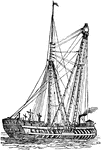
Sheer Hulk
The sheer hulk is a ship that is afloat but incapable of going to sea. It was used as a crane to help…
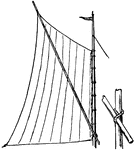
Sprit sail
"A fore-and-aft sail, bent to the mast at the weather leech, and having the after peak stretched by…
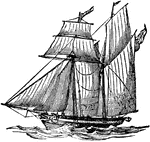
Schooner Ship
A small fast-sailing sharp-built vessel with two mass, and the principals sails of the fore-and aft…
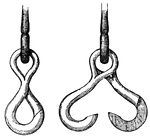
Sister Hooks - Closed and Open
"Nautical, one of a pair of hooks working on the same axis and fitting closely together: much used about…
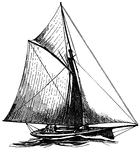
Sloop
"A small fore-and-aft rigged vessel with one mast, generally carrying a jib, fore-staysail, mainsail,…

Snotter
"A becket fitted round a boat's mast with an eye to hold the lower end of the sprit which is used to…

The Victors of Salamis by Fernand Cormon
Illustration of a painting of the ancient Greeks returning victorious from the Battle of Salamis against…
